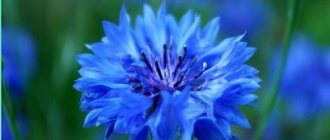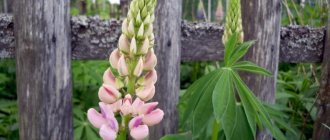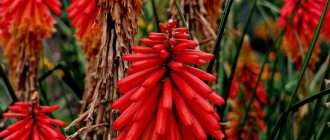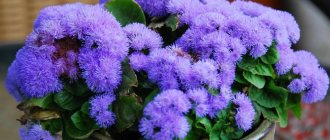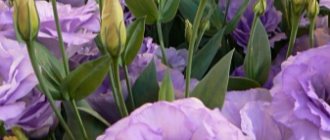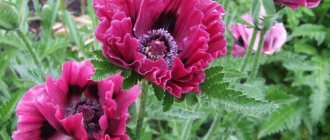In nature there are many different useful plants that can independently spread and grow in almost all areas. One of these medicinal herbs is mullein, a representative of the flora that belongs to the Norichinaceae family.
This plant has long been known in folk medicine for its medicinal qualities. Almost all parts of the herb are used to treat various groups of diseases, including pathologies of the respiratory system and gastrointestinal tract, skin and mucous membranes. Mullein is used both internally and externally, and has a small number of contraindications.
Chemical composition
The main healing effect of mullein is based on the fact that it contains high concentrations of iridoids, which are represented by harpagide and its acetate, as well as aucubin and catalpol. These compounds are antioxidant substances designed to slow down the aging process at the cellular level. Iridoids are capable of having an antimutagenic effect, which allows one to preserve genetic material and DNA chains intact. In addition, this group of substances has anti-inflammatory and immunostimulating properties, due to which the body’s protective function is strengthened, inflammatory processes, which are usually accompanied by swelling, fever and pain, are eliminated. Iridoids can also have a hypotensive effect and stimulate bile synthesis.
In addition to this group of substances, mullein also contains other valuable components. Thus, mucus was found in the plant, which has an enveloping, softening and protective effect on the mucous membranes. Mucus helps accelerate the healing of the mucous membrane of the digestive tract, and also improves the removal of mucus from the bronchi.
The sugars in the grass are broken down into glucose, as a result of which they serve as a source of energy for the human body. These substances regulate metabolic processes, stabilizing tissue nutrition and providing all cells with energy.
Saponins contained in mullein are highly active elements of chemical origin that help cleanse the lungs and normalize the production and excretion of urine. They are also characterized by anti-sclerotic properties and inhibit the development of cancer cells.
Flavonoids are intended to restore the normal functioning of the nervous system and improve concentration. In addition, this group of compounds increases the elasticity of the walls of blood vessels, protecting them from fragility. Also, these substances prevent atherosclerosis and improve peripheral circulation. They are characterized by anti-inflammatory and antimicrobial effects.
Essential oils stimulate the activity of the intestines and biliary tract, act as a sedative, and improve the removal of mucus from the lungs.
Mullein contains gums, which, when they enter the lumen of the digestive tract, act as adsorbents that absorb toxic substances. They envelop the mucous membrane, regulate appetite, restore intestinal microflora, and have an anti-inflammatory effect.
Thanks to the coumarins contained in mullein, the plant is endowed with antiseptic and astringent qualities, which helps stimulate the wound healing process. Also, these components have a moderate diuretic effect and prevent thrombosis.
This medicinal herb contains organic acids, which are also characterized by anti-inflammatory, antiseptic, antifungal and astringent qualities.
Tannin, found in mullein, is a tannin that has anti-inflammatory, anti-exudative and regenerative properties. In small concentrations, it ensures healing of the gastrointestinal mucosa and stool fastening; in high concentrations, it acts as an irritating element that enhances peristalsis.
The mineral composition of mullein is represented by K, Ca, Mn, Fe, Li, Mg, Cu and other components that take an active part in metabolic processes.
The product also contains vitamins such as retinol, tocopherol, and ascorbic acid. They are responsible for tissue renewal, are characterized by antioxidant properties, and strengthen the body.
Mullein flowers contain plant ash, which is endowed with anti-inflammatory and blood thinning properties.
Places and features of collecting mullein plants
Mullein is easily spotted in its natural habitat by its bright yellow flowers. When choosing plants for harvesting medicinal raw materials, you need to pay attention to environmental safety: it is highly undesirable to collect grass growing along busy highways or chemical plants.
Common mullein is usually harvested during its flowering period: in July and August. All components of the above-ground part of the plant will be useful, but it is the petals that are endowed with greater healing power. In the fall, you can dig up and dry the roots.
Traditional healers do not advise collecting wilted or wet inflorescences. After collection, cut grass should be thoroughly washed to remove dirt and dried in a dark, dry and well-ventilated area to prevent rotting. The mullein should be turned over periodically to ensure it dries evenly.
The bear's ear will become brittle over time, and its rims will acquire a delicate golden color. Well-dried petals have a sweet aroma with light notes of honey. When these signs appear, the raw materials can be put into paper or fabric bags and stored in a dark closet or pantry.
What it looks like and where it grows
Despite the fact that the royal scepter, as mullein is also called, is a wild plant, during the flowering period it has a rather attractive appearance.
The stem of the grass is erect, covered with ashen hairs resembling thick fluff. The pointed leaves are about 15–30 cm long and about 5–10 cm wide. The leaves grow along the entire length of the stem, rushing upward.
Bear's ear has small, bright yellow flowers. The plant blooms from the second year of life. This herb is found in almost all regions of the world, but its natural distribution area is Eurasia and the archipelagos of the Atlantic Ocean along Africa and Europe. Mullein is unpretentious to soils, grows freely and develops near roadsides, and can bloom in sandy and rocky areas. If the grass falls on black soil and other types of fertile soil, it begins to hurt and soon dies.
Kinds
The royal scepter is the highest of all varieties. Its flowering lasts the longest. In medicine it is used as an anesthetic. This type is most effective in the fight against hemorrhoids and lung diseases. In addition, this type of mullein has diaphoretic, expectorant and diuretic properties, which makes it possible to use it in the production of certain medications.
This type, like a bear's ear, helps to cope with inflammatory processes, and also dilates blood vessels and eliminates cramps.
Hybrid mullein is probably the most unpretentious. It is able to survive even in severe drought and severe frosts, but prefers open, sunny areas. The inflorescences have a rich yellow color, which are presented in the form of a panicle or spike. It has wound-healing and insecticidal characteristics.
Panicle mullein is easily distinguished by the presence of serrated leaves. This variety blooms throughout the summer. Used to lower blood pressure.
The densely flowered type can reach 0.8 m in height, is characterized by tomentose pubescence, the leaves have an oblong shape. It also blooms from June to August.
Purple mullein differs from its counterparts in that it is a perennial plant and has purple flowers. This species blooms for a short time - from June to early July. In folk medicine it is used to stimulate the heart muscle and improve intestinal motility.
Black mullein is distinguished by a spindle-shaped root; it can usually grow up to 1 m in height. The flowers are collected in bunches and emit a sweetish aroma that persists even in dried raw materials. Can bloom throughout the summer. For therapeutic purposes, flowers are used that can treat diseases of the respiratory organs.
The Olympic plant species is also perennial and can reach a height of 2 m. The inflorescences are small, the foliage is gray. The grass blooms only in July. The product is used as a remedy against ulcers.
Video:
beneficial properties of mullein Expand
Collection and storage
If you collect and dry medicinal raw materials incorrectly, it is very easy to lose their healing qualities. So, you can collect the plant only in dry, sunny weather, after the dew has evaporated. Fallen leaves should not be collected, as they no longer contain anything useful. Raw materials that lack calyxes of inflorescences will be of high quality.
When collecting grass, you need to ensure that the raw material does not turn brown; it must retain its golden color. You can dry mullein under a canopy or in a ventilated area. Dried herbs must be packaged in an airtight container.
The corollas of flowers are most often used for medicinal purposes. Common mullein (bear's ear) is usually collected as a medicinal product. It blooms from July to August.
Other parts of the herb, such as roots and leaves, are also used in traditional medicine recipes. Raw materials from one plant can be collected for a month, or even longer, since it has a fairly long flowering period. If you need to collect leaves or flowers, it is better to choose the end of summer for this.
Planting and care
The soil
Planted in light, loose soil, for this purpose it is drained with sand or gravel. Does not like clayey or overfertilized soil.
Illumination
The plant is light-loving, but it is better to choose partial shade or a place where there will be sun only part of the day. In full shade, the flower will greatly slow down its development.
Watering
The plant only needs watering in dry weather. Under normal conditions, the flower has enough precipitation. It has a long tap root and easily obtains moisture from groundwater. On the contrary, in waterlogged soil the root will rot and the plant will die.
Fertilizer
Mullein rarely needs feeding; the flower has enough nutrients contained in the soil. If the soil is depleted and poor, you can feed the plant before flowering.
Medicinal properties of mullein herb
First of all, it should be noted that the plant is used to treat bronchitis and bronchial asthma. Mullein is useful for catarrh of the respiratory organs, influenza, tuberculosis, especially when the pathology is accompanied by a painful cough, since the herb has expectorant properties. This helps to liquefy mucus and remove it from the respiratory tract. The plant is also used as a mild diuretic.
Mullein also has antispasmodic, anticonvulsant, astringent, hemostatic, enveloping, antifungal, antiseptic and wound-healing properties.
With the help of this plant, you can treat diseases of the mucous membranes in the oral cavity, stomach and esophagus, as well as in the intestines. Such plant raw materials can protect the mucous membranes from external negative influences, reduce pain, and relieve swelling. Mullein also fights influenza viruses.
For a long time, people have noticed that if you apply the flowers of a plant to the site of a bruise, it protects against the appearance of a bruise. If bruises have already appeared, you can tape flowers to the sore area, which will speed up the process of resorption of the hematoma. Consequently, this raw material is used in dermatology, namely for burns, frostbite, acne, eczema, and furunculosis. Recovery is ensured by improving peripheral circulation, which normalizes the flow of blood with all the necessary components to the site of injury.
Bronchopulmonary diseases, including obstruction due to bronchitis, laryngitis, and pneumonia, can also be cured with the help of mullein. In addition to the fact that bear's ear treats coughs, it also improves immunity and ensures quick recovery after a cold. The plant helps to cope with shortness of breath due to bronchial asthma, inflammatory processes in the oral cavity, such as stomatitis, periodontal disease, and gingivitis.
The rich vitamin composition helps eliminate swelling. Thus, the plant helps remove excess salt deposits from the body, while relieving acute inflammation in the joint. Mullein is recommended for use for arthritis, gout, neuralgia, and rheumatism.
The high content of mucus and tannins makes it possible to use the herb for gastritis, colitis of various etiologies, and lack of pancreatic enzymes. A popular raw material in the treatment of hemorrhoids.
In addition, mullein has a sedative effect, normalizing brain activity, stabilizing the nervous system, increasing stress resistance and concentration.
For women
In gynecology, mullein is often used. It is indicated for inflammation of the genital organs; during menopause, the product helps regulate high blood pressure and prevent the development of atherosclerosis. However, one should take into account the peculiarities of using this plant for medicinal purposes, since among the fairer sex there are a number of restrictions on taking such a herbal remedy. For example, you need to remember that mullein is contraindicated during pregnancy and breastfeeding, as it has irritating and tonic properties.
During menstruation and in the period after childbirth, even if the child is bottle-fed, it is also contraindicated to use this herb due to the fact that it acts as a blood thinner.
Mullein flower powder is used as a powder to heal cracked nipples. In this case, you should first treat these areas with an oily solution of retinol, fish oil or carrot squeeze. Bear ear oil can be used. If breastfeeding continues during therapy, you should wash the nipples with warm water before doing so.
In addition, in gynecology, scepter-shaped mullein is used internally in the presence of inflammatory diseases. In this case, you need to prepare a decoction of 1 tbsp. raw materials poured into a glass of boiling water. The resulting solution should be infused until cooled, after which it should be taken 1 tbsp. after meals three times a day.
During menopause, accompanied by atherosclerosis and hypertension, you can prepare the same infusion, only in this case you will need a more concentrated solution, that is, you will need 2 tablespoons per glass of boiling water. raw materials. Despite the fact that mullein solution is actively used for rinsing, douching should not be done with it, since herbs with a higher concentration of tannins are used for these purposes.
For men
In andrology, there are no recipes based on mullein intended for the treatment of diseases of the male reproductive system. However, due to the fact that disturbances in the functioning of the prostate gland are often accompanied by hemorrhoids, the plant can indirectly contribute to the treatment of this gland in the treatment of hemorrhoids. Thus, mullein will ensure an increase in the secretion of this gland.
Such herbal raw materials are one of the most effective ways to cure inflammation of hemorrhoids. Compared to a number of analogues, this product eliminates inflammation in these tissues faster than others, preventing bleeding and eliminating pain in the anus. Medicinal compositions are prepared from mullein, intended to destroy pathogenic microflora in this area. They help protect against the development of bacterial complications and irritation of the mucous membrane and skin. In this case, anal ulcers, erosions and tears are covered with a kind of protective film, as a result of which the recovery process is accelerated.
You can also do sitz baths. In this case, you will need to prepare a decoction. To do this, you need to take 50 g of dried flowers and 50 g of mullein roots. Pour the resulting mixture into 3 liters of boiled water and simmer over low heat for 20 minutes. Pour the resulting broth into a container suitable for sitz baths. When the liquid has cooled to 40 degrees, sit in the basin so that the entire anus is completely immersed in the medicinal solution. The procedure should last about 15 minutes. To get good results, you need to do such baths 3-4 times a week before bed. Procedures are prohibited in case of bleeding from inflamed nodes, since such a solution has a negative effect on the body and only worsens the condition.
For children
Recently, it has not been recommended to give children mullein for internal use, however, traditional medicine has preserved recipes for the preparation of medicinal compositions intended for the treatment of severe cough, whooping cough, inflammation of the bronchi and lungs with difficult sputum.
To obtain syrup, 1.5 tbsp is required. mix herb flowers with 2/3 tbsp. marshmallow rhizomes and boil them in 0.3 liters of water for 10 minutes. After this, filter the solution and mix it with a glass of sugar. Next, cook the mixture until a thick syrup is obtained. Give the finished product to children 1 tsp. 4-5 times a day for severe cough.
To prepare a healing decoction, you need 1 tsp. vegetable raw materials, pour 0.5 liters of water and boil for 1 minute, filter and drink 1 tbsp. three times a day after meals. Instead of water, you can add milk.
Where does scepter-shaped mullein grow?
In our country, the scepter-shaped mullein is found in many regions of the southern and central zone, in the North Caucasus. This is a European-Caucasian plant. It loves fertile soils, so it is a common plant for the black soil belt.
Scepter-shaped mullein grows in the steppes, meadows, forest edges, and near roads. It can be found on road and railway embankments, in sand quarries and even on rocky slopes. The scepter-shaped mullein loves open sunny places.
Up to 50 species of these mullein species grow in our country.
Mullein in folk medicine
- For bronchial asthma and diseased lungs, a remedy that requires 3 tablespoons is effective. raw materials, pour 500 ml of boiled hot water and infuse the mixture in a thermos. Divide the resulting amount of liquid into three parts, which you drink throughout the day.
- For the treatment of pathologies of the stomach and intestines, a remedy made from 40 g of dried flowers and 1 liter of boiling water is useful. Brew and let the mixture brew. Drink the prepared solution 50 ml every two hours.
- To make a soothing composition, you need to drink a flower decoction with the addition of a small amount of natural honey.
- As noted above, mullein has diuretic properties, hence it is beneficial for gout and kidney stones. To cope with these ailments, it is necessary to make a healing decoction. This infusion should be drunk in the morning on an empty stomach, and during the day before each meal. Take about 200 ml per day.
- For diarrhea, an infusion from the inflorescences of a flowering plant is an effective remedy. Take the product several times a day, 20 ml.
- Usually mullein is used in combination with other medicinal herbs. To obtain a diaphoretic solution, you need to mix 1 part each of the flowers of the royal scepter, black elderberry and mallow, as well as 2 parts each of linden and raspberry. Mix all ingredients, measure 1 tbsp. the resulting mixture and boil in 500 ml of water. Drink the resulting solution hot before bed.
- In the form of compresses and rubbing, mullein is used for radiculitis and rheumatism. To do this, pour 1 tbsp. raw materials 250 ml vodka. Let this mixture brew in a dark place for two weeks.
- For ulcers and purulent wounds, an ointment made from 5 parts of crop seeds and 10 parts of butter will be effective.
We recommend reading:
use of wild rosemary in folk medicine
Read
Verbascum flower: description and characteristics of the plant
These fluffy, spike-like inflorescences bloom throughout the summer season.
Verbascum is native to Mediterranean countries and the temperate subtropical Asian zone.
Verbascum perennial is very valuable among landscape designers. It is distinguished by its unpretentiousness and does not require special care and attention, so even the busiest person can cope with its cultivation. It thrives in hot and arid climates and can grow in the garden under the scorching rays of the sun. If you plant it in a place with slight shade, the flowers will not fall off longer. The verbascum plant is not afraid of sudden changes in temperature and long dry periods. As soon as it stops blooming, the stem also dies.
Types of healing compounds
Mullein is a raw material for the production of medicines used for various diseases. Based on this plant, decoctions and infusions are made for internal use, as well as products for external use. These compositions have immunostimulating, antiviral, analgesic and anti-edematous characteristics.
To obtain dosage forms, dried aerial parts are used, crushed to 5 mm, and roots - up to 3 mm.
Infusion
Mullein infusion is effective in the treatment of pulmonary pathologies, including pneumonia, asthma and even pulmonary obstruction.
To make a medicinal composition, you need to pour 1 dessert spoon of dried raw materials in the form of flowers with 200 ml of boiling water. Leave this solution for a quarter of an hour and then strain. Divide the finished product into three doses and drink before meals.
Tincture
Alcohol tincture helps with joint and muscle pain. Used as an external remedy for rubbing.
To get such a drug, you need 1 tbsp. mix dried raw materials with 10 tbsp. vodka. Let the mixture brew for three days in a dark place with occasional shaking. After the specified period, strain the liquid.
Decoction
A plant-based decoction is useful for the treatment and prevention of high blood pressure, atherosclerosis, cystitis, and diseases of the digestive system. The composition obtained according to this recipe can be used to rinse the mouth for stomatitis and sore throat.
To make the product, use 1 tbsp. pour 250 ml of boiling water over dried and crushed raw materials. Place this mixture on the stove and bring to a boil over low heat. Cook the mixture for two minutes. After this, the composition should sit for half an hour. Drink the filtered liquid three times a day, 1 tbsp.
Tea
To make healing tea, you need 2 tbsp. Mix the dried raw materials with boiling water and leave for several hours. Next, strain the mixture.
This drink will improve the functioning of the digestive tract. Mullein tea is used for constipation and diarrhea. In addition, it is able to remove toxins from the body.
If you have sleep disorders, it is recommended to drink mullein leaf tea before bed.
Oil
There is a popular belief that mullein can be used for urinary incontinence. In fact, such a remedy is used externally to eliminate ear pain, in which case the composition is instilled into the ear, as well as for joint pain, and the sore spot should be rubbed with oil. This mixture is also suitable for compresses for dry skin types and dry eczema.
To obtain vegetable oil, use 3 tbsp. Place fresh herb flowers in a glass container, pour in 100 ml of olive oil and leave in the sun while shaking daily. Repeat this procedure for a month, after which the remedy will be ready for use.
Ointment
Using mullein ointment, you can cure wounds that do not heal for a long time, festering, weeping and trophic ulcers.
To create such a healing remedy, it is necessary to crush the dried seeds of the crop to a powdery consistency. Mix the resulting powder with butter in a ratio of 1:2. Apply the prepared ointment to the affected areas under a bandage, doing it twice a day.
Scepter-shaped mullein description of appearance
Photo: Yandex.Pictures
The stem of the plant is single, thick, hard, densely covered with hairs. Alternate, descending leaves densely hug the stem of the scepter-shaped mullein.
The basal and lower leaves are wide, ovoid, located on a short petiole. The upper and middle leaves are much smaller and sit on the stem of the plant.
A distinctive feature of the scepter-shaped mullein is pubescence. The stems, leaves, pedicels and flower calyxes have dense felt pubescence, giving the plant a grayish-green color.
The flowers are large, bright yellow and arranged in bunches on short stalks. The tufts form a long, dense, brush-like inflorescence at the top of the stem. Scepter-shaped mullein blooms from June to late autumn. Flowers in an inflorescence do not bloom simultaneously, but gradually, several flowers a day. The fruits ripen as the plant blooms, closer to autumn.
Scepter mullein is a very aromatic plant, its smell is honey, and the flowers taste sweet.
Application in cosmetology
In cosmetology, the qualities of mullein are valued. After all, the plant has antifungal, softening, moisturizing, antibacterial, nourishing, soothing and antiseptic properties.
- To cleanse the skin, it is recommended to make an infusion of 1 tablespoon in the morning and evening. inflorescences and 100 ml of boiling water. Let the mixture brew for 30 minutes, then filter the liquid. Store the resulting composition in the refrigerator. Use the product for a long time, alternating with parsley infusion.
- To prepare a rejuvenating mask, you need to collect 1 tbsp. stamens from freshly picked flowers and grind them in a porcelain mortar. Mix the resulting pulp with 5 g of honey and 10 g of sour cream. Apply the resulting composition to the face for 15 minutes. After this, wash with warm water. You can use parsley decoction for this; it has bleaching properties. Mullein-based cosmetics can be used for no more than 10 days, then take a week's break, and then repeat the course.
- A moisturizing mask is prepared from 15 ml of flower infusion, 5 ml of natural honey and the same amount of olive oil. Apply this mixture directly to the face or soak a fabric mask in it and apply for 10–15 minutes.
- A decoction of mullein leaves and inflorescences can be used as a hair balm. In this case, the hair should be soaked in the healing infusion, covered with a cap for 30 minutes, and then washed in the usual way. The decoction can be used as a rinse.
- To speed up hair growth and eliminate dandruff, you need to mix 30 ml of infusion and 15 ml of burdock oil. Moisten your curls with the mixture. The product should act for half an hour, after which you need to wash your hair. This procedure should be repeated once a month.
- To prepare a body skin care product, you need to take a bath with 10 drops of royal scepter oil. This plant has a rich complex of useful substances.
We recommend reading:
use of bergenia in cosmetology
Read
Description
In the first year, verbascum forms a lush rosette of abundantly pubescent large leaves. A peduncle with small or large yellow flowers appears in the second year and blooms for 2-3 months. There are 300 types of verbascum in nature, but not every type of this plant has medicinal properties.
Applications in medicine have been found:
- royal scepter - a herb up to 1.5 m high, with small flowers, 1.5 cm in diameter, grows mainly in park areas, on forest edges and roadsides. The orb, crown and scepter are the most important insignia of power, and verbascum, thanks to its long racemose inflorescences, is very reminiscent of these symbols, for which it received its second name in ancient times - the royal scepter.
- scepter-shaped mullein or densely flowered can reach a height of 1.8-2 m. It blooms in mid-summer with large flowers (up to 5 cm in diameter), consisting of 5 petals and with their irregular shape resembling a diamond.
- Bear's ear or common mullein is distinguished by smaller flowers that have two lower stamens. The bear plant got its name because its leaf resembles a bear's ear.
Diseases and conditions
For example, it is quite possible to cure the initial stage of urolithiasis with mullein enzymes. Such important elements of the plant as saponins have a diuretic effect on the body and remove small stones and sand, and essential oils and iridoids reduce inflammatory processes and protect against infectious damage to the mucous membrane.
Cystitis (like other inflammatory diseases of the bladder) can also be cured using drugs based on this plant. The medicinal properties of common mullein lie in the action of enzymes such as essential oils, iridoids, acids and potassium. They relieve inflammation and act as pain relievers.
Bear ear can also deal with swelling easily. Thanks to saponins and its other components, the plant is able to remove all excess fluid from the human body.
Bronchitis, pneumonia and even asthma are quite amenable to adjustment with drugs based on the components of the royal scepter. First of all, these are mucus, saponins, essential oils, organic acids. They relieve inflammation of the respiratory system, cleanse the lungs, thin mucus and promote its removal from the body.
Thanks to elements such as saponins and iridoids, mullein is able to prevent the proliferation of cancer cells and even eliminate them.
Diseases associated with the nervous system (stress, overexcitation, depression, insomnia, neuroses) can also be treated with this herb. Saponins, flavonoids, ascorbic acid, alkaloids and magnesium, which are part of the plant, soothe and improve the functioning of the central nervous system. In complex therapy, they can even help in the fight against seizures and epilepsy.
Diseases of the joints, muscles and bone tissue are also effectively treated with bear's ear components such as flavonoids, calcium and magnesium, which strengthen bones, improve joint mobility and elasticity of connective tissues, restore damaged nerve fibers, etc.
Cardiovascular diseases can be effectively corrected with drugs that contain the active ingredients of mullein. These are flavonoids, essential oils, coumarins, alkaloids, ash, potassium, calcium, magnesium, which strengthen the heart and blood vessels, cleanse capillaries, lower blood pressure, and reduce blood clotting.
The royal scepter also helps with purulent wounds, ulcers, burns and other serious damage to the skin. Thanks to the action of coumarins, iridoids, organic acids, tannins and other elements, it is possible to get rid of bacterial and viral infections, so that wounds can cleanse and heal.
Using a bear's ear, you can completely recover from such a serious disease as hemorrhoids. Plant extracts help reduce painful formation and reduce inflammatory processes.
As you can see, the range of uses of common mullein in medicine is very wide and specific. How can you cure certain diseases at home?
"Royal Scepter": landing
All mullein are a godsend for flower growers who do not have enough time for painstaking care.
Soil and location
Thanks to its powerful taproot, mullein is not demanding on the composition and fertility of the soil. The best option would be sandy and sandy loam soils with a neutral or slightly acidic reaction. When planting seeds of the “Royal Scepter” there are only two restrictions:
- Viscous, heavy, clayey soils - the plant develops extremely poorly in them. If there is such land on the site, it is recommended to add more sand, peat, and fine gravel to it.
- 2. Fatty black soils - when grown in such areas, mullein fattens, due to which you will admire rapidly developing greenery, and not flowering. At the end of the season, in chernozem areas, goldenflower usually dies, since there is no incentive to reproduce, and therefore to flower.
Excessive fat content in black soil flower beds can be corrected by adding more sand to the soil.
Advice. The soil for the “Royal Scepter” should be moderately fertile, light and loose. Then the mullein will live in the flower garden for several years.
When choosing a planting site, preference is given to open, sunny areas. Minor shading is also allowed, but mullein develops poorly in deep shade and significantly loses its decorative effect.
Sowing
Mullein seeds have a high germination rate and are resistant to cold weather, so the “Royal Scepter” reproduces well by self-sowing. However, this is not always convenient when arranging a flower garden.
There are 2 options for planting seeds:
- In open ground. The method is suitable for most regions of the Russian Federation. The approximate sowing time is mid-May, when average daily temperatures do not fall below +13º C. Since the seeds are very small, before sowing they are mixed with sand, sown in moist soil and lightly sprinkled with earth or peat.
- Through seedlings. This option is good for areas with short, cool summers. Seeds are sown in cups with moistened soil, without covering them with soil, and covered with film on top. When stable heat sets in, the seedlings are transplanted into the flower garden along with a lump of earth. The distance between seedlings is 30-40 cm.
Preparing the bed for the “Royal Scepter” involves deep loosening and not too much moistening of the soil. If the land is extremely infertile, apply a half dose of mineral fertilizers.
Note: do not cover mullein seeds with too thick a layer of soil. After the seed germinates, the roots themselves will settle at the desired depth.
Caring for young plants
When sowing the seeds of the “Royal Scepter” directly into a flowerbed, the first shoots will appear in about 15-18 days. In the first month, seedlings develop slowly, then quickly grow. At this stage, the seedlings must be thinned out, leaving only the strongest specimens.
If you planted the classic “Royal Scepter”, then the distance between them should be about 35-40 cm, when growing dwarf forms - 20-25 cm.
Use in the garden
Tall plants with such large and beautiful flowers will not go unnoticed in the garden. Especially when it comes to decorative varieties with different colors of petals. Throughout the summer, mullein will attract insects and birds. It begins to bloom when the primroses have already faded and the later perennials have not yet formed buds. Thus, mullein fills the pause in flowering. It is important to choose the right neighbors so that the flower garden looks harmonious. They can be orchis, catnip, salvia, anafalis, sage.
Thickets of mullein are also used as a background in the background of a flower bed. It can be planted in small groups in the middle of the lawn, in rockeries or along paths.
Contraindications and side effects of mullein
The use of folk remedies made from mullein is useful for:
- gastrointestinal ailments: gastritis, hepatitis, ulcers.
- atherosclerosis and hypertension;
- respiratory diseases;
- hemorrhoids;
- dermatological diseases (primarily eczema);
- dental diseases associated with a violation of the integrity of the oral mucosa (gingivitis, stomatitis, etc.).
Mullein does not contain hazardous substances, so the use of folk medicines containing it has virtually no contraindications. The exceptions are:
- pregnant and lactating women;
- Small children;
- people with individual intolerance;
- tendency to bleed.
It is strongly recommended that you discuss the issue of starting treatment for bear ear with your doctor. If the condition worsens, use of the herb should be discontinued.

